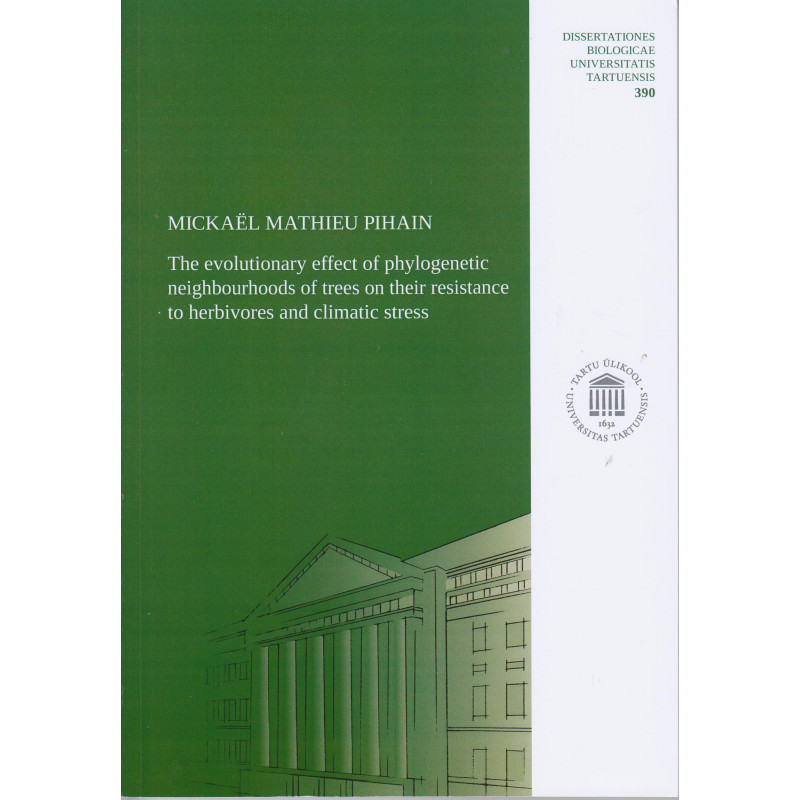



Tartu : University of Tartu Press, 2022
145 p.
Paperback, in very good condition.
Theses(doctorate).
Series: Dissertationes biologicae Universitatis Tartuensis ; 390. Summary in Estonian
Forests are under two ecological threats, herbivory and climatic stress. It has been shown that trees living with similar species suffer increased herbivory and climatic stress. Yet, in nature, many forests are composed of closely related species. In this thesis, I argue that given that tree populations can evolve increased resistance to herbivory and climatic stress. Neighbourhoods composed of closely related species might select for increased resistance to herbivory. This selection for increased resistance against herbivores might have a cost for resistance to climatic stress. In such a case, neighbourhoods composed of closely related species might select against climatic stress resistance. Trees might also increase their investment into mutualists. Mycorrhiza are mutualistic fungi increasing tree resistance to herbivory and climatic stress. Neighbourhoods composed of closely related species might select for increased investment into mycorrhiza, which might lead to increased resistance to herbivory and climatic stress. This thesis shows that living with similar neighbours selects for increased resistance against herbivory without cost for climatic stress resistance. Moreover, living with similar neighbours selects for increased investment into mycorrhiza, which increases the resistance against both herbivory and climatic stress. Finally, tree species living with closely related neighbours have a reduced risk of extinction under environmental change. This thesis adds insights into the mainstream of community ecology by suggesting that tree species can rapidly evolve increased resistance to herbivory and climatic stress, which might explain the existence of forests composed of similar species. In addition, the selection of increased resistance to climatic stress in neighbourhoods composed of closely related species might enable tree-species to cope with future environmental changes.